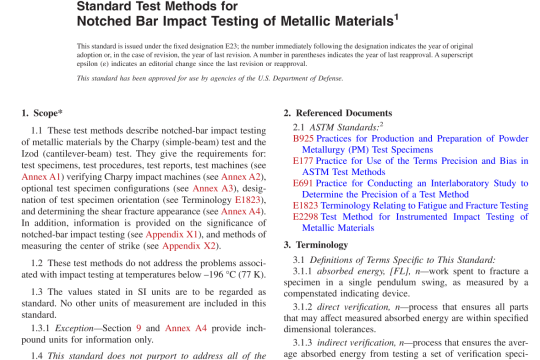ASTM F404-2017 pdf free download
ASTM F404-2017 pdf free download.Standard Consumer Safety Specification for High Chairs
1. Scope
1.1 This consumer safety specification covers the perfor- mance requirements and methods of test to ensure the satis- factory performance of the high chair and high chairs created by using a high chair conversion kit and component(s) from another product. 1.2 This consumer safety specification is intended to mini- mize injuries to children resulting from normal usage and reasonably foreseeable misuse or abuse of high chairs. N OTE 1—This consumer safety specification is not intended to address accidents and injuries resulting from the interaction of older children with children in the high chair or the accidents resulting from abuse and misuse by persons over three years of age. 1.3 No high chair or high chair conversion kit produced after the approval date of this consumer safety specification shall, either by label or other means, indicate compliance with this specification unless it conforms to all requirements con- tained herein. 1.4 The values stated in inch-pound units are to be regarded as standard. The values given in parentheses are mathematical conversions to SI units that are provided for information only and are not considered standard. 1.5 The following precautionary caveat pertains only to the test methods portion, Section 7, of this specification: This standard does not purport to address all ofthe safety concerns, ifany, associated with its use. It is the responsibility ofthe user of this standard to establish appropriate safety and health practices and determine the applicability ofregulatory limita- tions prior to use.
3. Terminology
3.1 Definitions ofTerms Specific to This Standard: 3.1.1 accessory, n—component, included with a high chair or sold separately by the manufacturer of the high chair. 3.1.2 conspicuous, adj—visible, when the high chair is in all manufacturer’s recommended use positions and an occupant is sitting in the high chair, to a person standing near the high chair at any one position around the high chair but not necessarily visible from all positions. 3.1.3 double action release mechanism, n—mechanism re- quiring either two consecutive actions, the first of which must be maintained while the second is carried out or two separate and independent locking mechanisms that must be activated simultaneously to fully release the tray. 3.1.4 fabric, n—any woven, knit, coated, laminated, extruded, or calendared flexible material which is intended to be sewn, welded, heat sealed, or glued together as an assembly. 3.1.5 flexible passive crotch restraint, n—a passive crotch restraint made of flexible material, such as fabric or webbing. 3.1.6 front torso support, n—a barrier extending horizon- tally across the seat ofthe high chair that is the primary support intended to restrict forward movement of the occupant’s torso when the tray is removed and creates a completely or partially bounded opening in front of the occupant. 3.1.7 high chair, n—a free standing chair for a child up to 3 years ofage which has a seating surface more than 15 in. above the floor and elevates the child normally for the purposes of feeding or eating. 3.1.7.1 Discussion—A high chair may be sold with or without a tray and may be height adjustable to higher or lower use positions. It may also include a recline position for infants not able to sit up unassisted. 3.1.8 high chair conversion kit, n—an accessory or compo- nent sold by the manufacturer of a product or high chair and used to convert or modify a product so that it can be used as a high chair.3.1.9 key structural elements, n—sub{assemblies such as seat assemblies, leg assemblies, base assemblies, or individual components such as footrests, stabilizing bars, front torso supports, passive crotch restraints, or other components de- signed to support the weight of the occupant, or a combination thereof. 3.1.10 latch release surface, n—any surface on the tray latch release mechanism that results in the tray releasing from its adjustment position when a force is applied perpendicular to that surface.




